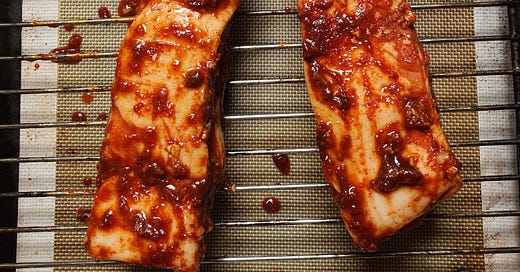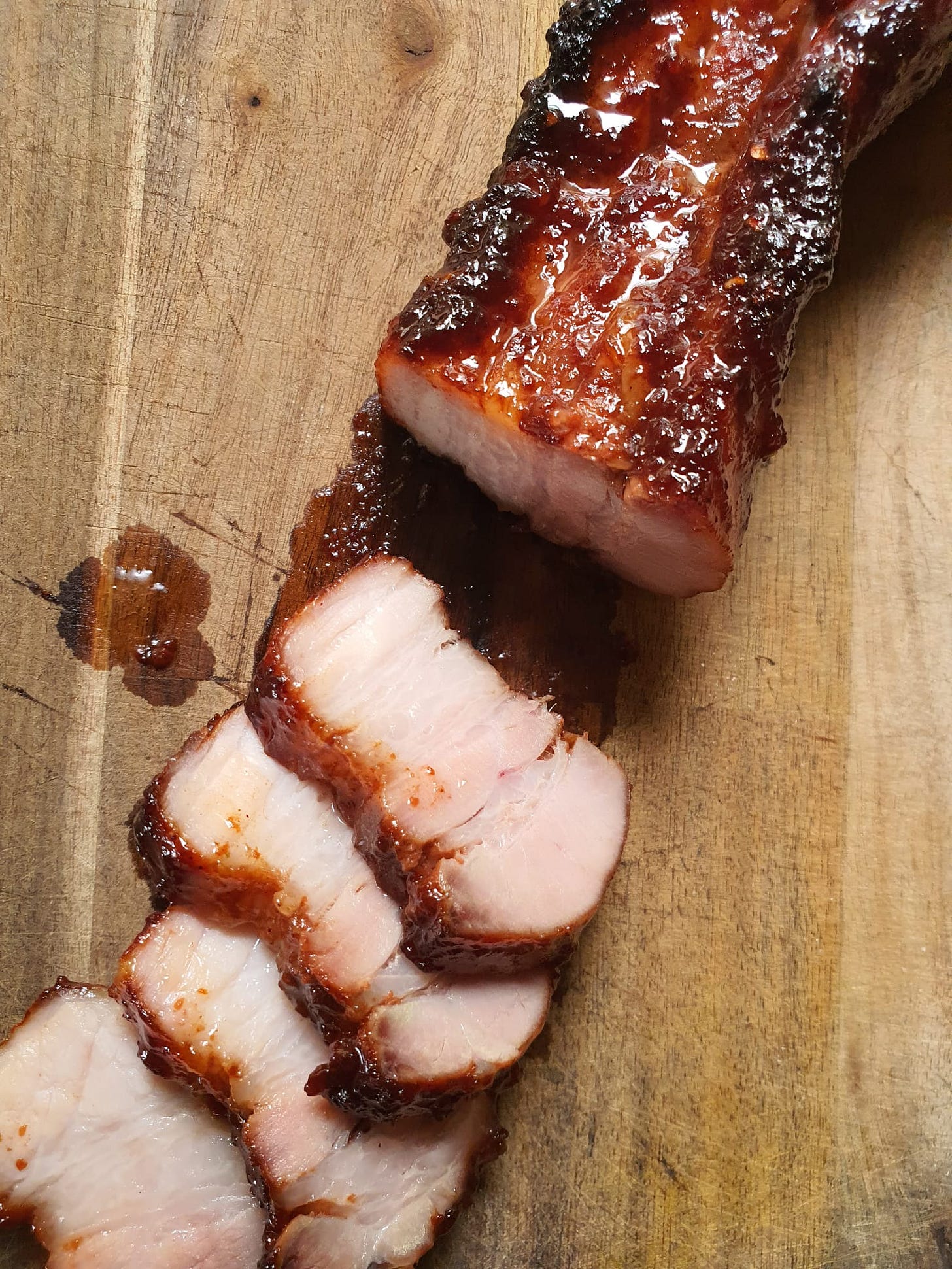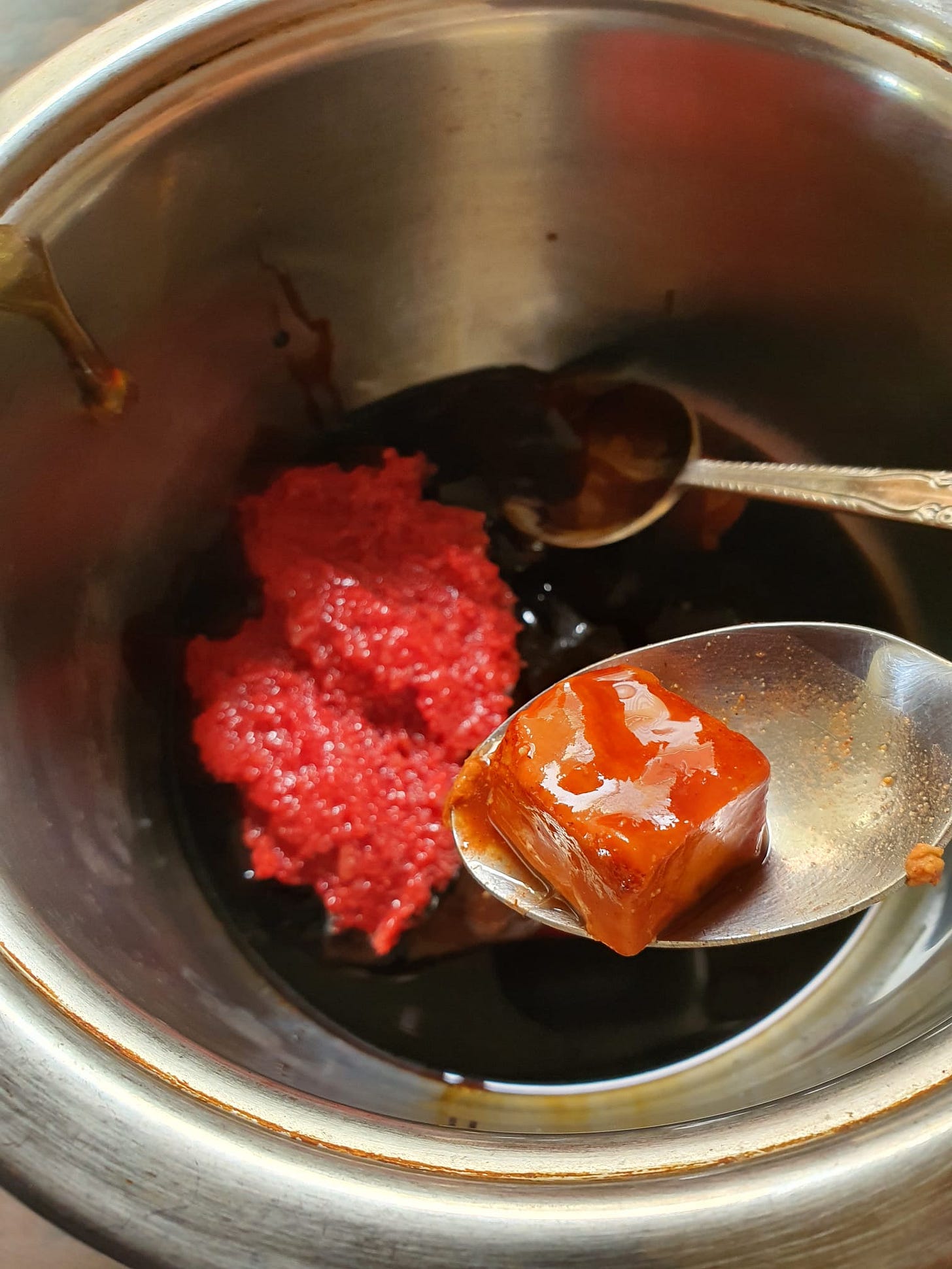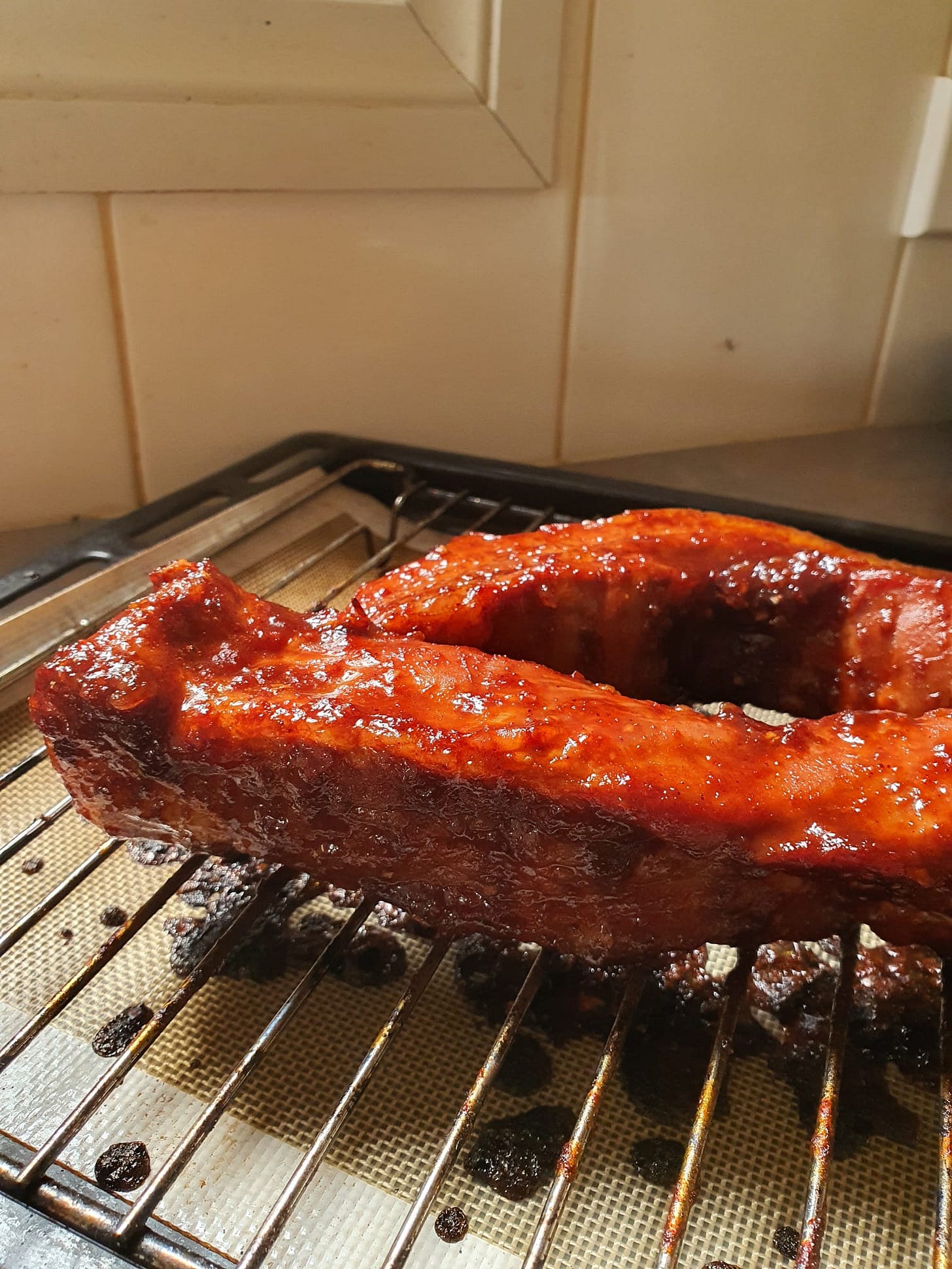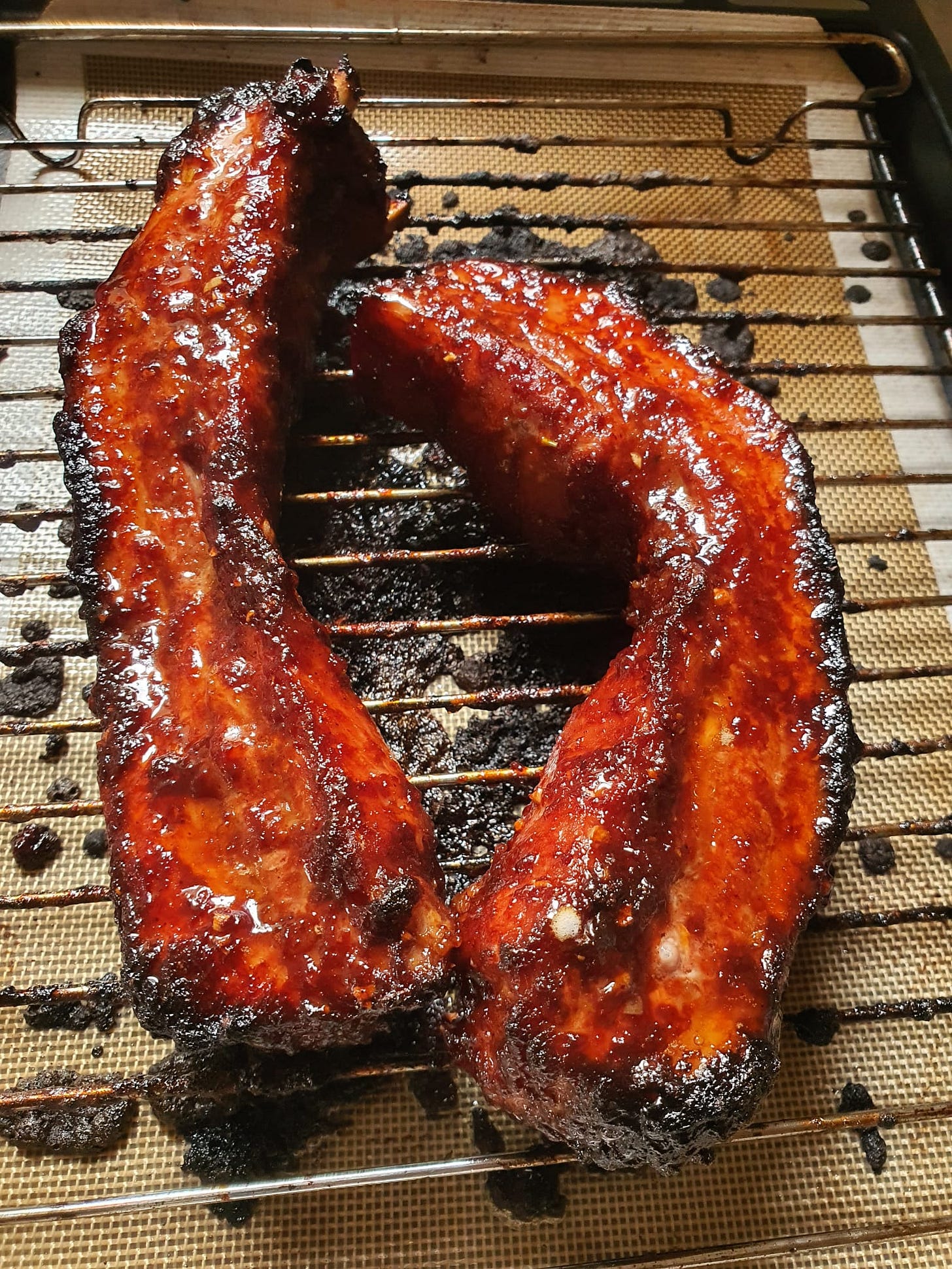Singapore Noodles is a reader-supported publication. If you are able, please consider becoming a paid subscriber (or gifting a subscription to a friend) so I can continue the research, writing, and recipe development it takes to bring you stories and recipes from Singapore. Thank you so much!
I hardly ate any greens when I first moved to Melbourne. A lot has changed since. I am now in the middle of writing a vegetarian cookbook and enjoy eating vegetables. There are even days where the sheer over-the-top richness of meat puts me off (think a huge hunk of lamb shoulder or whole suckling pig), but if there’s one thing that gets me in a meat frenzy, it is charsiu (Chinese BBQ pork).
What I enjoy the most about charsiu is the char - the blackened crust. When the pork is freshly roasted, this can be audibly crunchy and especially delicious. This alone is a compelling reason to roast your own charsiu at home, and thankfully it is not too difficult with a domestic oven.
The cut of pork
Traditionally, charsiu is made with pork shoulder 梅头肉, the part of the pig located just behind the neck. This is a fatty cut of pork that is not quite as lean as pork fillet, but less fatty than pork belly. But, some hawkers claim that the most prized charsiu is from the armpit of the pig, known as 不见天 (literally ‘never sees the sky’). Located between the shoulder and the belly, this cut boasts a higher fat content than pork shoulder, and the fat is marbled throughout the meat. It is also free of connective tissue and sinew, so the meat stays tender. This cut is popular not only amongst the Chinese, but with the Spanish as well. If you’ve heard of secreto (or secreto iberico), it is this same cut.
In recent years, hawkers and chefs have begun using pork belly for charsiu too, as some customers do request for more fatty cuts. For the home-cook, pork belly is also more forgiving. The cut you use really boils down to your own preferences - how health-conscious you are, how rich you’d like your charsiu to be etc.
Marinade
It is often quite obvious when charsiu is good just by its appearance. I steer clear of specimens that are garishly red, dry-looking, and have hardly any char. What you want is a darkly-coloured, deep-red slab of meat that is invitingly glossy and well-blackened in spots.
The marinade is key. The exact combination of ingredients vary cook to cook, but all of them have a balance of both sweet and savoury ingredients. The sweetness can come from sugar, maltose or honey. I don’t like honey because its flavour can be too strong and distracting. Maltose is my favourite for the way it adds a sticky shine that sugar cannot provide.
For savouriness, you can add ingredients such as oyster sauce, hoisin sauce, taucheo (fermented bean paste), red fermented tofu and red glutinous rice wine lees. I used my own homemade glutinous rice wine lees for a natural reddish tint and umami, but you can get yours from W Rice Wine if you live in Singapore. Otherwise, you can use food colouring such as Super Oren with a light hand.
Method of cooking
There are elaborate methods out there on the internet that involve roasting the meat while hanging it in the oven. While it definitely simulates how charsiu is traditionally made, many people just don’t have a large enough oven to do that. It is also a lot of fuss that I like to do away with. What I do is place a wire rack on top of a lined baking sheet. You can use parchment, foil, or a Silpat (my choice) - the idea is to catch the marinade as it drips off the pork, and make it easy for you to clean up after. There is nothing worse than scrubbing burnt, sugary marinade off a baking tray.
I roast the pork in two phases. The first phase is to get the pork cooked through and to build a coat of caramelised marinade. To do this, I roast the pork at a moderate temperature, while dipping it into the marinade at 10-minute intervals. You could brush the pork with the marinade instead, but I find that dipping is far less work and produces a superior result.
The second phase is to get your oven ripping hot and produce a good char on the pork. My advice is to char the pork as much as you dare to. It is better to over-char than under-char.
As the cook, you get to enjoy the best bits - the burnt ends of the pork that are fatty and crunchy. Allow to cool completely before slicing so that the meat is well-rested and stays juicy.
Charsiu
Makes 750g

